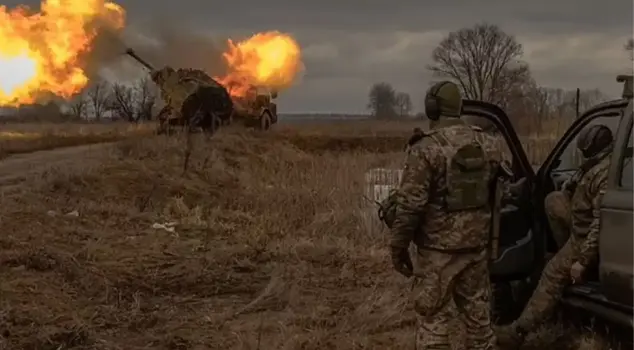
15.05.2025 11:40
The conflict between Russia and Ukraine has been ongoing since 2014 and escalated into a full-scale invasion by Russia in 2022. The conflict has displaced millions of people and claimed tens of thousands of lives. The beginning of the war is considered to be marked by Russia's annexation of Crimea and the clashes in the Donbas region in eastern Ukraine.
The geopolitical tension between Russia and Ukraine has transformed into a long-lasting war, rooted in events dating back to 2014, which reached a new dimension with Russia's full-scale invasion on February 24, 2022. This conflict, which has displaced millions of people, claimed tens of thousands of lives, and deeply affected global balances, continues with all its violence as it approaches its fourth year in May 2025.
Beginning of the Conflict and Frozen Years
The starting point of the war was Russia's annexation of Crimea following the Maidan Revolution in Ukraine in 2014 and the beginning of clashes between Russian-backed separatists and Ukrainian forces in the Donbas region (Donetsk and Luhansk) in eastern Ukraine. Although the Minsk Agreements of 2015 aimed to halt the conflict and bring a political solution, the region turned into a "frozen conflict" area due to ceasefire violations, and low-intensity clashes continued for seven years.
2022: Full-Scale Invasion and Resistance
Although Russia's increasing military buildup along the Ukrainian borders in late 2021 was interpreted as a signal of invasion, the multi-front attack that began on the morning of February 24, 2022, was a shock to the world. Russian forces attempted to advance from many points in the country, including the capital Kyiv. However, in the face of the fierce resistance from the Ukrainian army and people, Russia was unable to achieve its goal of capturing Kyiv and had to withdraw from the capital's surroundings by April 2022. As the main focus of the war shifted to eastern and southern Ukraine, Western countries began to provide unprecedented military and financial support to Ukraine.
Counteroffensives and Transition to War of Attrition
In the autumn of 2022, the Ukrainian army conducted successful counteroffensives in strategic regions such as Kharkiv and Kherson, liberating significant territories from Russian occupation. During this period, Russia announced the annexation of the four regions it occupied (Donetsk, Luhansk, Kherson, and Zaporizhia); however, this step was not recognized internationally. By 2023, the war took on the character of trench warfare and attrition, marked by months of bloody clashes in cities like Bakhmut. The major counteroffensive launched by Ukraine in the summer did not achieve the expected rapid territorial gains due to heavy Russian defensive lines and minefields.
End of 2023 - May 2025: Fixed Lines and Local Conflicts
From the end of 2023, the course of the war largely stabilized. Intense artillery fire and drone warfare became the main tactics along the front lines. Russia attempted to advance through localized attacks, such as capturing key points like Avdiivka (February 2024) and opening a new front around Kharkiv by Spring 2025 to exert pressure on Ukrainian forces. International military and financial aid remains vital for Ukraine, but various challenges arise regarding the timing and amount of this assistance. Due to the insistence of both parties on their positions, no concrete progress has been made in peace negotiations.
The Heavy Cost of War and Global Effects
The humanitarian cost of the war has reached devastating levels; millions of people have been displaced, and cities and infrastructure have suffered severe damage. Tens of thousands of military and civilian lives are estimated to have been lost. The war has had serious effects on global energy and food prices, disrupted supply chains, and led to profound changes in international relations. As NATO's role has regained importance, many countries have increased their defense spending.
As of May 2025, the war between Russia and Ukraine continues with all its complexities. The future of the battlefield, the course of international support, the internal dynamics of both countries, and the potential role of diplomacy emerge as key factors that will determine the final outcome of the conflict.